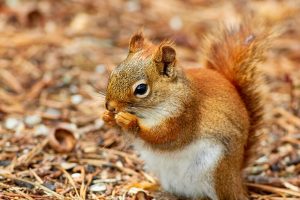Only Hummingbirds; No Bees Allowed!!
Hummingbirds are beautiful and come in different colors and sizes! House owners love to have these beautiful creatures visit their gardens and hummingbird feeders and do their best to offer a haven to the hummingbirds. To watch these birds flutter their wings and go from flower to flower in their inimitable way can bring a lot of joy to watchers! However, there is literally ‘a bee in this bonnet’! The hummingbirds are attracted to nectar, and so are many other sweet-loving insects, bees, wasps, ants, etc.!
Feeders for Hummingbirds
Hummingbirds need a lot of energy thanks to their energetic movements and constant flitting! They have a high level of metabolism and need to keep their energy levels very high. They get this energy from the nectar of flowers. They eat a lot of bugs as well. Hummingbirds are like bug-eating machines, and the nectar is the fuel that powers their machine! This is where feeders come into the picture.
The problem is if the hummingbirds are attracted to the feeders, then so are the bees, wasps, and ants! If few in numbers these insects are not a problem, however, if they slowly take over the feeder and hummingbirds don’t get a chance to recharge, then it is a severe problem. There are several ways you can control insects and especially bees on the feeders.
Feeder Design
- A saucer-shaped feeder has the nectar away from the feeding ports. This makes the insects and bees unable to reach the nectar. The hummingbirds have long beaks and tongues and have no problem.
- Some feeders have built-in ant moats and bee guards to keep bees out. The design is such that the hummingbirds can get to the nectar without any problem.
- If the feeder does not have these features, it is possible to get these accessories separately and attach them to the feeder.
Location
- The right location is important! Once hummingbirds find a food source, they look around for more such feeders. It is good to have multiple feeders. Some people like watching the birds and keep the feeders near the windows.
- Just changing the location by a small distance can disorient the bees and even the other insects! Hummingbirds can easily find the feeders, but bees rely on communication and follow each other, so it becomes difficult for them. Once they find the feeder, you can again switch the location.
- Keep the feeder in a shaded place in the garden. Bees usually like drinking nectar in sunny places. The cool temperature will also keep the nectar fresh.
Feeder
- Bees love and are attracted to yellow color and avoid red color! Use this information to your advantage. Some feeders have yellow bee guards, which may make it more attractive to the bees.
- Try to keep the feeder clean. When hummingbirds feed, they can leave drips on the feeder. If you fill the feeder too much, it can also cause the nectar to come out. Every time after refilling, clean the feeder carefully. Even a small mess can invite bees and insects to the feeder.
- You can try using insect traps. However, remember that bees and insects are necessary for your garden to bloom well. Don’t put traps that can completely ban or kill them. Be careful while putting traps in place.
Diversion
- You can create a diversion for the bees by keeping a feeder slightly away from the hummingbird feeder. Make it easy for the bees to get to it. Preferably, keep a yellow feeder for the bees. Make this a sweeter mixture. Keep this feeder in a sunny place.
- Bees love all flowers and plants. For a healthy garden, it is unavoidable to have lots of attractions for bees. However, you must avoid any open trash, sticky wrappers, soda cans, open fertilizer, etc. because bees find these very enticing. This can help in keeping the bees population under control.
What Not To Do?
Sometimes, people get too annoyed with bees taking over the hummingbird feeders and are ready to try anything. However, one has to be careful and take enough precautions to not end up harming the birds.
Insecticides
Never use any insecticide, even in small quantities. Any pesticides may stop bees but will cause immense danger to hummingbirds.
Oils
Many people try putting oils, Vaseline, or any such slippery substances around the feeder surface hoping to deter bees and other insects. This may harm the hummingbirds by sticking to their feathers and making it difficult for them to fly freely.
Conclusion
Bees help in pollinating and are very useful creatures in the environment! You should remember this fact before you start a war against them! Your aim has to be a safe and eco-friendly way of warding off the bees from hummingbird feeders. Use these tips to enjoy a colorful hummingbird display in your garden!








